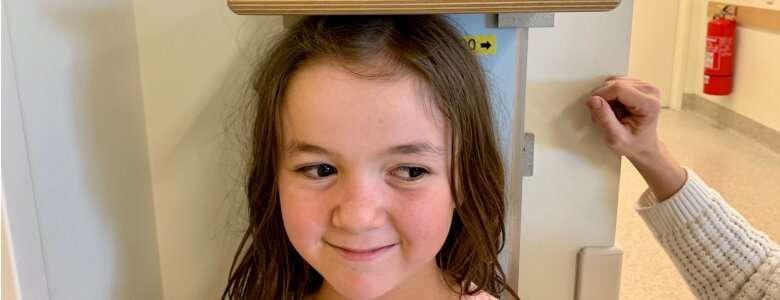
A phase three global clinical trial led by the Murdoch Children’s Research Institute (MCRI) has shown a new drug boosts bone growth in children born with achondroplasia, the most common type of dwarfism.
The randomized, double-blind, placebo-controlled trial results, led by MCRI clinical geneticist Professor Ravi Savarirayan, have been published today in the prestigious medical journal, The Lancet.
Achondroplasia is the most common cause of dwarfism and is caused by overactivity of the FGFR3 protein, which slows bone growth in children’s limbs, spine, and the base of their skull.
The experimental drug, vosoritide, blocks the activity of FGFR3, potentially returning growth rates to normal. Previous MCRI-led trials have confirmed vosoritide was safe to give to young people with dwarfism. This new randomized controlled trial conclusively shows it is also effective increasing bone growth over one year of daily injections.
Professor Savarirayan said, “This drug is like releasing the handbrake on a car, it lets you get up to full speed instead of having to drive with the brakes on.”
Achondroplasia is a genetic bone disorder affecting 250,000 people worldwide, or about one in every 25,000 children. It is caused by a mutation in the FGFR3 gene that impairs bone growth and means that children grow around 4 cm per year, instead of the usual 6 to 7 cm.
Current achondroplasia treatments, like surgery, only address the symptoms. In contrast, vosoritide is a precision therapy directly targeted at the molecular cause of the disease.
BioMarin Pharmaceutical, who manufacturers the peptide drug and funded the trial, has applied to the US Food and Drug Administration to license vosoritide for its use in treating achondroplasia. The European Medicines Agency validated the Company’s application. Australian licensing is expected to follow sometime after a successful US application.
For the trial, 121 children aged five to under 18 were enrolled, which was conducted at 24 hospitals in seven countries. In Melbourne, the trial was conducted at the Melbourne Children’s Trial Center. The 60 children who received daily injections of vosoritide grew an average of 1.57 cm per year more than the children who received placebo, which brought them almost in line with their typically developing peers.
Professor Savarirayan said, “We know that beyond the cold hard facts and figures around growth rates and bone biology, we have hope that a treatment can improve kids’ health outcomes, social functioning and increase access to their environments. Anecdotally, our patients tell us they now are able to do more stuff like climbing trees, jumping rocks and being more independent generally, which is specific to their experiences.”
Dr. Johnathon Day, Medical Director of Clinical Science at BioMarin Pharmaceutical Inc. said, “Vosoritide is the first potential precision pharmacological therapy that addresses the underlying cause of achondroplasia and this randomized, double-blind, placebo-controlled Phase 3 study further adds to the scientific knowledge we’ve gained over many years from the clinical development program. I’d like to personally thank and congratulate all of the investigators and I am especially grateful to all of the children and their families who have participated in these studies,”
Paul Cohen and Elizabeth Ryan’s daughter, Sarah, was born with achondroplasia. Sarah was one of the very first patients enrolled in the trial. Mr Cohen said, “During the trial we’ve seen Sarah grow up at the same rate as her friends. She can now join in bike rides with her friends, and loves being allowed on our local waterslide.”
Although the trial did not significantly improve the children’s proportions between their upper and lower bodies, the children will be followed until they achieve their final adult height to see how long the drug’s effects last and whether they experience a growth spurt during puberty, as this doesn’t normally happen in children with achondroplasia.
Source: Read Full Article


